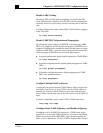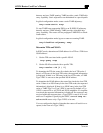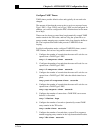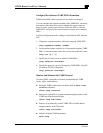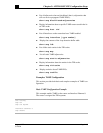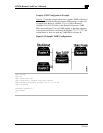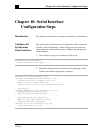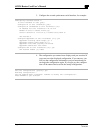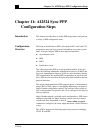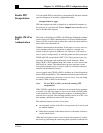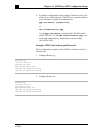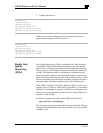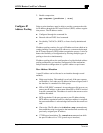
Chapter 11: AI2524 Sync PPP Configuration Steps
August 1997 Page 11-1
2524UM
Chapter 11: AI2524 Sync PPP
Configuration Steps
Introduction
This chapter describes how to enable PPP encapsulation and perform
a variety of PPP configuration tasks.
Configuration
Overview
The Point-to-Point Protocol (PPP), described in RFCs 1661 and 1332,
encapsulates network layer protocol information over point-to-point
links. You can configure PPP on these physical interfaces:
z
Asynchronous serial
z
HSSI
z
ISDN
z
Synchronous serial
The software provides PPP as an encapsulation method. It also pro-
vides the Challenge Handshake Authentication Protocol (CHAP) and
Password Authentication Protocol (PAP) on serial interfaces running
PPP encapsulation. By enabling PPP encapsulation on physical inter
faces, PPP can also be used on calls placed by dialer interfaces that use
physical interfaces.
The current implementation of PPP supports option 3, authentication
using CHAP or PAP, option 4, Link Quality Monitoring, and option 5,
Magic Number configuration options. The software always sends op-
tion 5 and negotiates for options 3 and 4 if so configured. All other op-
tions are rejected.
Magic Number support is available on all serial interfaces. PPP always
attempts to negotiate for Magic Numbers, which are used to detect
looped-back lines. Depending on how th
down-when-looped
command is configured, the router might shut down a link if it detects
a loop.
The AI2524 supports the following upper-layer protocols: Bridging,
CLNS, IP, and IPX.



